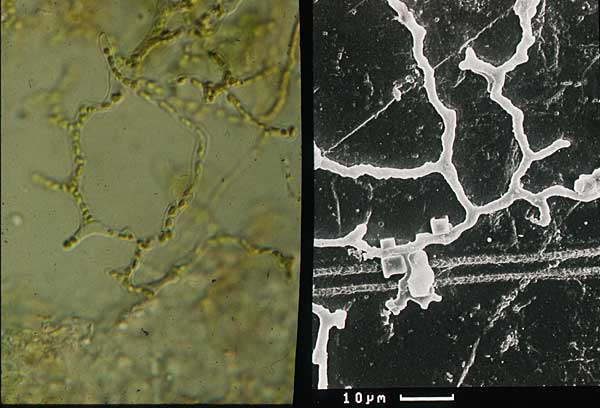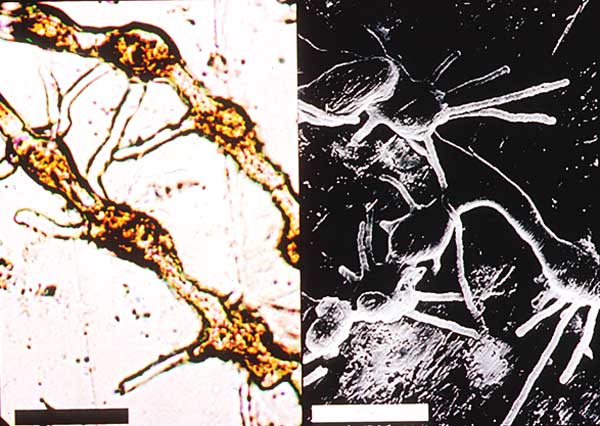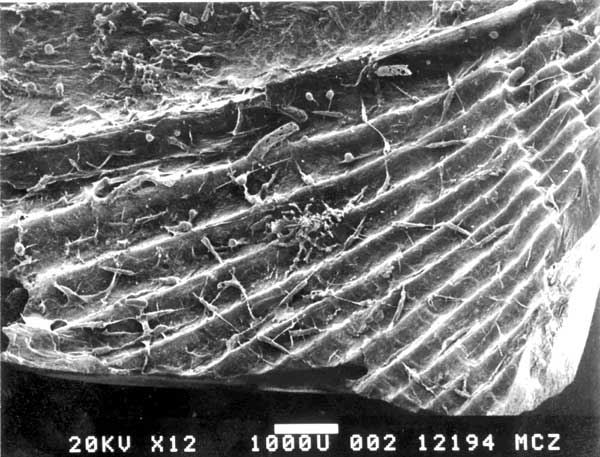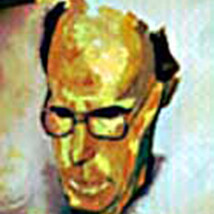What are Microborings?
Start • Research group • What are microborings? • Microborings & Paleobathymetry • Results • Publications
|
Endolithic micro-organisms (or microendoliths) are boring cyanobacteria, green and red algae, fungi and foraminifers. They produce boreholes less than 100 µm wide that correspond in most samples exactly with the outline of the boring organism. They mainly colonize calcareous substrates (such as shells and skeletons or stromatolites and ooids or hard grounds), more rarely also siliceous or phosphatic substrates. Nowadays microendoliths are distributed globally from terrestrial and fresh water to deep sea environments. Traces of microendoliths have been existing since Precambrian times. For an overview of relevant publications see Radtke et al. (1997) and Glaub et al. (2007). Modern and fossil microendoliths: |
 |
| Fascichnus grandis (Eocene, Radtke 1991). |
 |
|
Ichnoreticulina elegans (right) and its producer Ostreobium quekettii (green alga). |
 |
| Rhopalia catenata (right) and its producer Phaeophila engleri (green alga). Scale bars: 30 µm. |
 |
|
Microendoliths in the shell of a Devonian spiriferid (Vogel et al. 1987). |
Start • Research group • What are microborings? • Microborings & Paleobathymetry • Results • Publications




